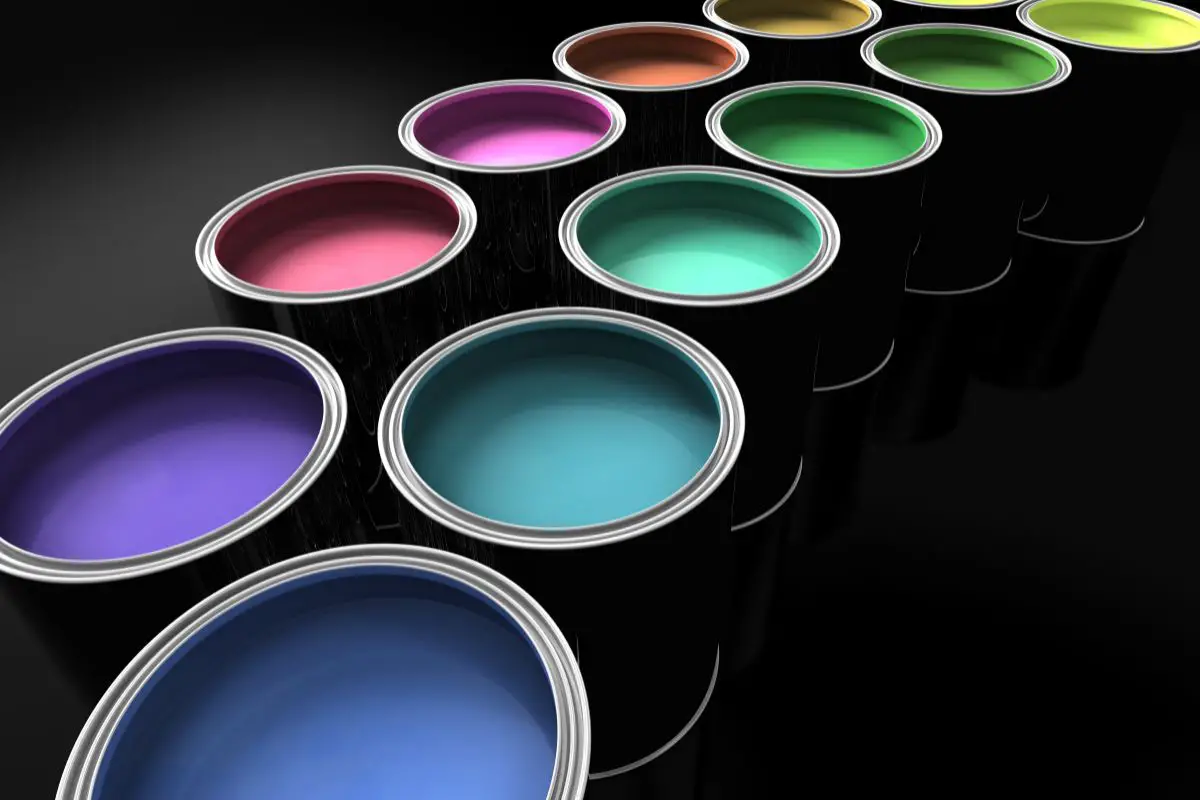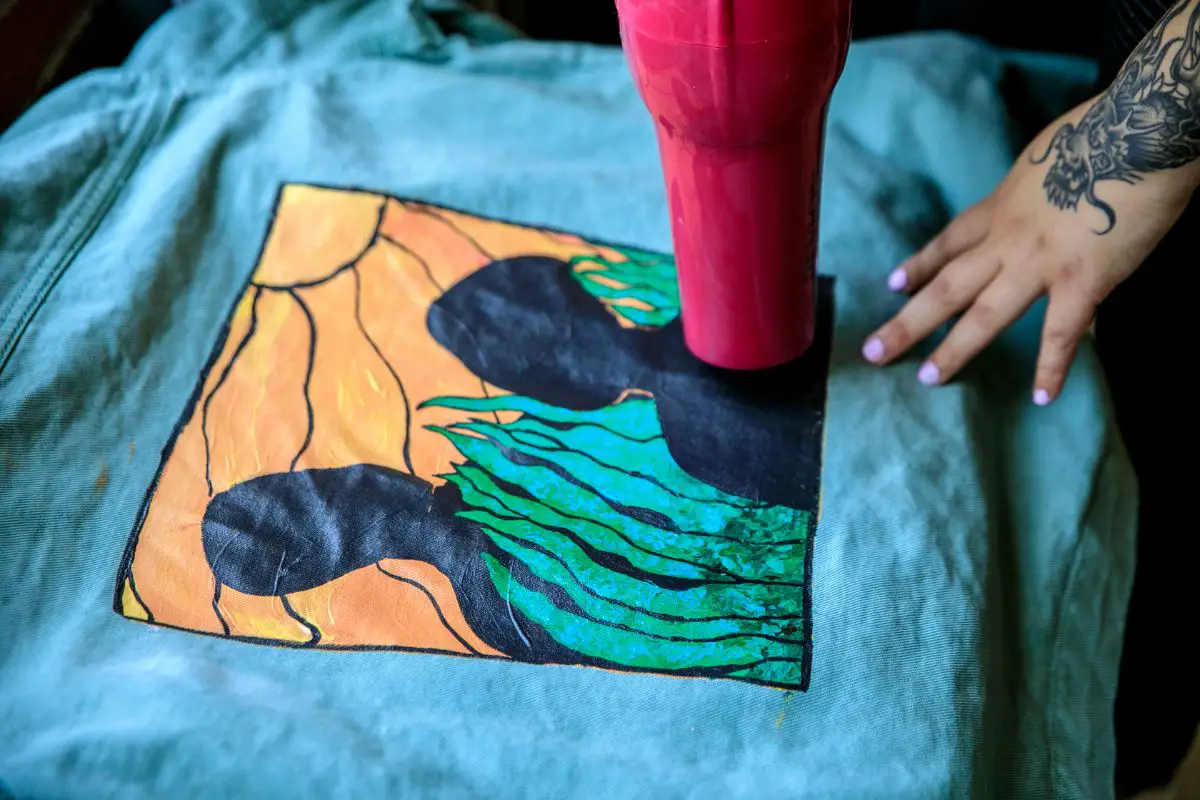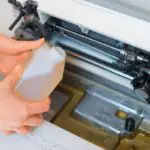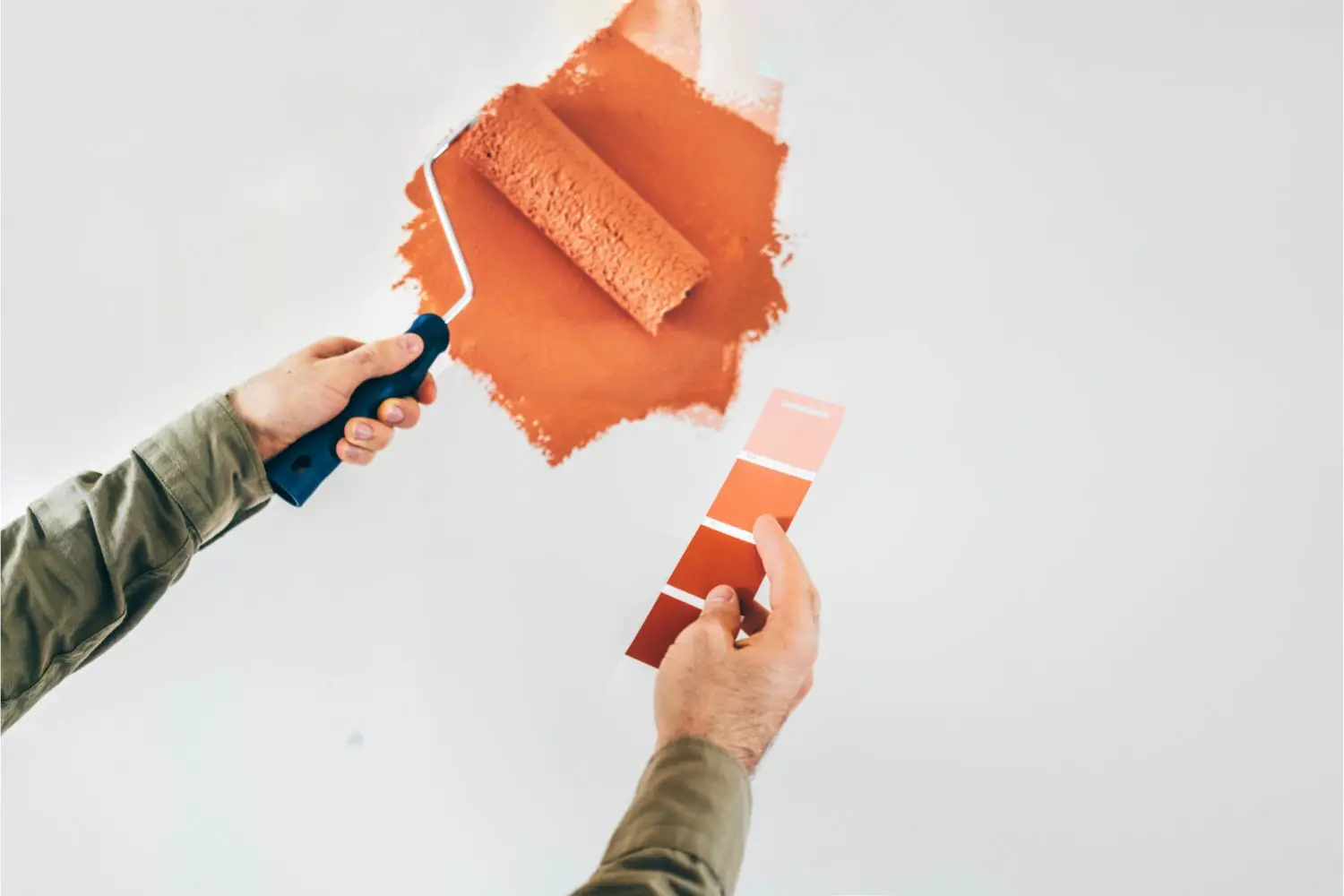When it comes to painting, you’re honestly spoiled for choice with how many different types of paint you can use.
Whether it’s an oil-based paint, an enamel, a chemical-based paint, or countless other variations, they each have their own benefits and will bring new qualities to your painting.
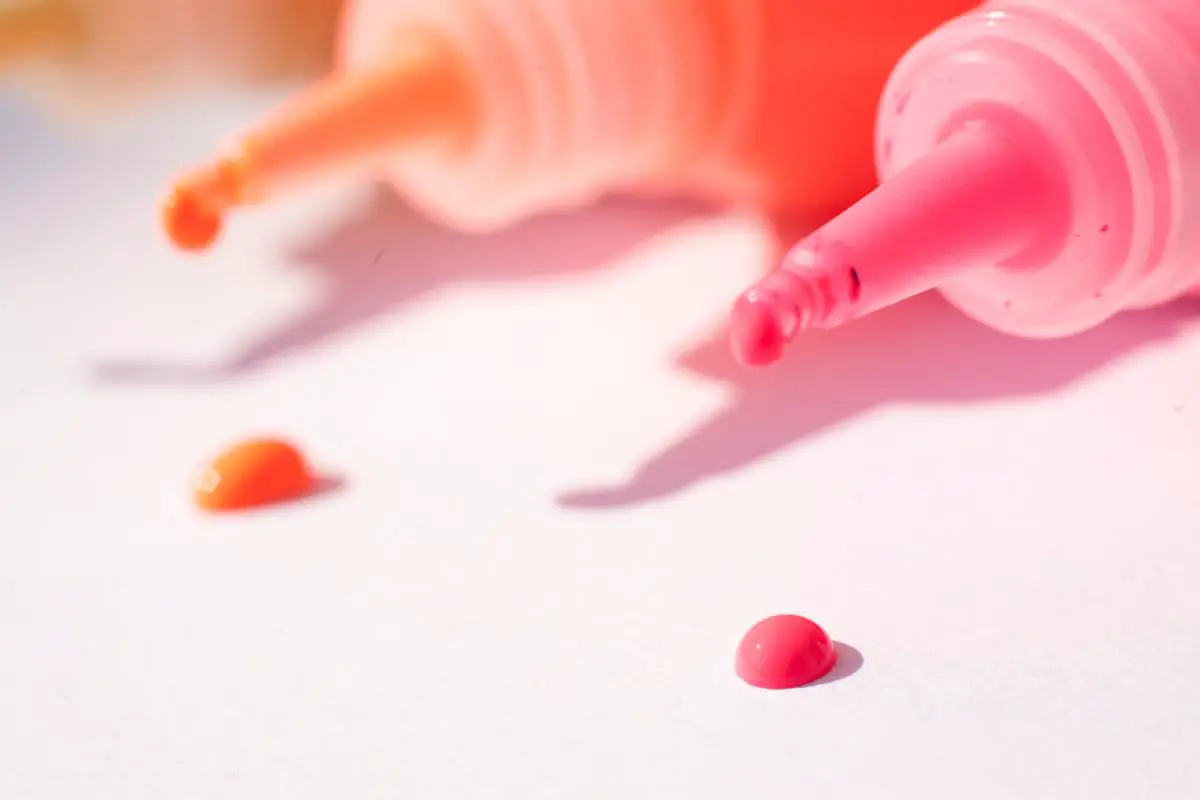
Water-based paints and acrylic paints are some of the most popular types of paint out there (see also “Can Acrylic Paint Be Safely Used On Your Skin?“), but what are they ? What does each one do and what’s the difference between them?
To give the short answer, almost every acrylic paint is actually water-based anyway, but it doesn’t go the other way: not all water-based paints are acrylic.
There are various other types of water-based paints you can get, like gouache, latex, tempera, and more.
In our useful guide below, we’re going to explain everything you need to know about water-based paint and acrylic paint, as well as highlight the key differences in them by looking at loads of factors, such as how they’re used and how durable they are.
By the end of our guide, you’ll be able to confidently use these paints in your own work!
What Makes A Paint?
As you can imagine, there’s a lot of science and specificity that goes into making paints, which is why there are so many different types of them, each with their own characteristics.
When you break it down, a paint is made up of binder, pigment (the color), vehicle, and some other additional materials. When you include different types of each of these components, you get a different paint with different properties.
The binder in a paint is what binds the paint’s pigments all together in film, and also what helps the paint then stick to the surface that you’re painting it on.
On the other hand, vehicles are types of liquid which keep the paint inside the container fluid.
What Is Water-Based Paint?
When we look at what-based paint in those terms of the elements that comprise it, it’s all about the vehicle. Depending on the vehicle, there are two different types of paint, which are water-based and solvent-based.
What Is Acrylic Paint?
On the other hand, it’s best to look at acrylic in terms of the binder that’s being used to make it.
It’s an acrylic polymer, and that polymer helps to bind the pigments all together inside a paint film, keeping all the color together and then helping it to stick to surfaces that it’s painted onto.
Are Water-Based Paint And Acrylic Paint The Same?
As we touched on in the introduction, almost every single acrylic paint is actually water-based, but that doesn’t mean that all water-based paints are acrylic.
This is because there are various other popular water-based paints that aren’t acrylic, such as watercolor, tempera, latex, poster paints, and gouache.
Although most acrylic paints are indeed water-based, it’s their acrylic polymer inside them that helps to give the paint different qualities.
Acrylic paint unsurprisingly has the highest amount of acrylic polymer in it when compared to those other types of water-based paints we just mentioned, and this makes the paint a great pick for specific uses.
What Is Acrylic Artist Paint And Acrylic House Paint?
If you’ve heard of acrylic artist paint and acrylic house paint, then you might be wondering what the difference is between these two versions of acrylic paint. Each of them has their different ideal uses, thanks to their individual qualities.
As you can imagine, acrylic artist paint is the best for artwork, while acrylic house paint is the best for painting domestic settings. What makes each of them good for their respective uses?
Well, acrylic artist paint is useful because it dries quickly and works well on canvas. On top of that, it’s non-toxic, which is very useful for a paint that somebody is going to be spending a lot of time around.
On the other hand, acrylic house paint is more durable, which is really useful because it needs to stand the test of time on both indoor and outdoor domestic surfaces.
After all, those surfaces can get exposed to moisture and dirt, and they’re also likely to peel.
On top of that, the acrylic house paint is more flexible and cleanable than acrylic artist paint, which also makes it easier for using to paint a home.
Which Acrylic Paints Aren’t Water-Based?
We’ve said a couple of times now that almost all acrylic paints are water-based, which begs the question: what are the ones that aren’t?
The answer is that these remaining acrylic paints are solvent-based instead. These types of paint are made from liquefying agents that are then supposed to evaporate thanks to a chemical reaction with oxygen.
Solvent-based paints have a few differences compared to water-based ones. For example, they have a tougher finish, which makes them easier to clean. However, they also have slower drying times than water-based paints.
A few of the solvent-based acrylics include acrylic lacquer, acrylic clear coatings, and acrylic primer paints.
Water-Based Paint VS Acrylic Paint: What’s The Difference?
Now that we’ve gone in-depth about what a water-based paint is and what an acrylic paint is, and how almost all acrylics are water[-based, it’s time to thoroughly compare the two.
Now, since so many acrylic paints are water-based, it’s going to be quite difficult to compare two such similar things.
As a result, we’re going to be comparing acrylic paints to the qualities and characteristics of other water-based paints, allowing you to see the differences in that sense.
The key difference between the pair is in the acrylic polymer concentration in the paint, because other water-based types of paint have a lesser amount of acrylic polymer binder in them.
Or, actually, they have a different binder altogether, using other chemical compounds such as gum arabic, or others.
As a result, these other water-based paints have different qualities to them than acrylic polymer, and those qualities make them a better choice for certain jobs.
We’re going to go into all these qualities in the section below, where we’re going to compare acrylic paint with these other water-based paints on a number of different factors.
For example, we’ll look at their difference in durability, their finish, their common uses, their cost, the types of surface that they can be painted on, and so much more. Read on!
| Quality | Acrylic Paint | Other Water-Based Paints |
|---|---|---|
| Their Use | Acrylic artist paint used by artists for display, acrylic house paint used for domestic exteriors. | Artists use them for display, scanning and reproducing; for house paint, used in domestic interiors. |
| Durability | Very durable! Resistant to peeling, cracking, wear, tear, and weather, which makes it perfect for painting domestic exteriors. Also resistant to UV. | Not very durable. Can easily peel or crack, easily affected by weather, susceptible to wear and tear. For these reasons, it’s better for indoor paint jobs. Not always UV resistant. |
| What Surfaces? | You can paint various different surfaces, including metal, walls, glass, and canvas. Versatile! | An artist water-paint is able to be used on paper and cardboard, while latex water-based paints are better for surfaces like drywall and wood. |
| Type of Binders | Highest concentration of acrylic polymer resin inside it. | Lower acrylic polymer concentration, or in other cases a different binder or polymer altogether. For example, gum arabic is the binder for watercolor paints. |
| Coverage Quality | Artist acrylic paint has great coverage, but acrylic house paint gives you less coverage for every coat. | Artist water-based paint can be either opaque or transparent, while a water-based house paint will give you better coverage for every coat. |
| Finish | Will gives you a shiny, but sometimes sadly streaky, finish. Artist ones will give a satin finish. | Often gives you a less streaky finish. |
| Cost | Typically expensive, thanks to the high concentration of acrylic polymer in them. | Since the concentration of acrylic polymer is far lower in them (or sometimes non-existent, thanks to the presence of another polymer!), other water-based paints are much cheaper. |
| Availability | Can be tough to find them, and they’re expensive on top of that. | Readily available, you’ll especially find water-based house paints in home improvement businesses. |
| Type Of Application | Has a thicker application. | Has a smooth application. |
| Drying Speed | Great for quick drying, because it dries within half an hour. | Great for quick drying, because it dries within half an hour. |
| Can It Be Thinned? | You can thin it by adding either mineral spirit or some water. | You can thin it by adding some water. |
What Type Of Paint Is The Best Choice?
Having looked at this brief overview of comparisons between water-based paint and acrylic paint, you might be wondering which type is going to be the best pick. Well, it depends!
The best paint for the job will, naturally, depend on what the job is. If you’re trying to paint on paper, then one of the other water-based paints will be a great choice, since they work brilliantly for those surfaces.
On the other hand, if you’re looking to paint a picture on a canvas, then your best bet is acrylic paint.
And if you’re looking to paint the inside of your home? Then one of the other water-based house paints, such as latex, will be your best choice.
However, it’s important to remember that every brand and make of paint is different, and the only way you’re going to truly know how a specific paint will perform is by checking the product page on the manufacturer’s website.
There, you should be able to find key information about its use and application.
Water-Based Paint VS Acrylic Paint
Our table showed you a small overview of how acrylic paint compared with other types of water-based paint on a number of important factors, but it’s worth going more in-depth on each of them.
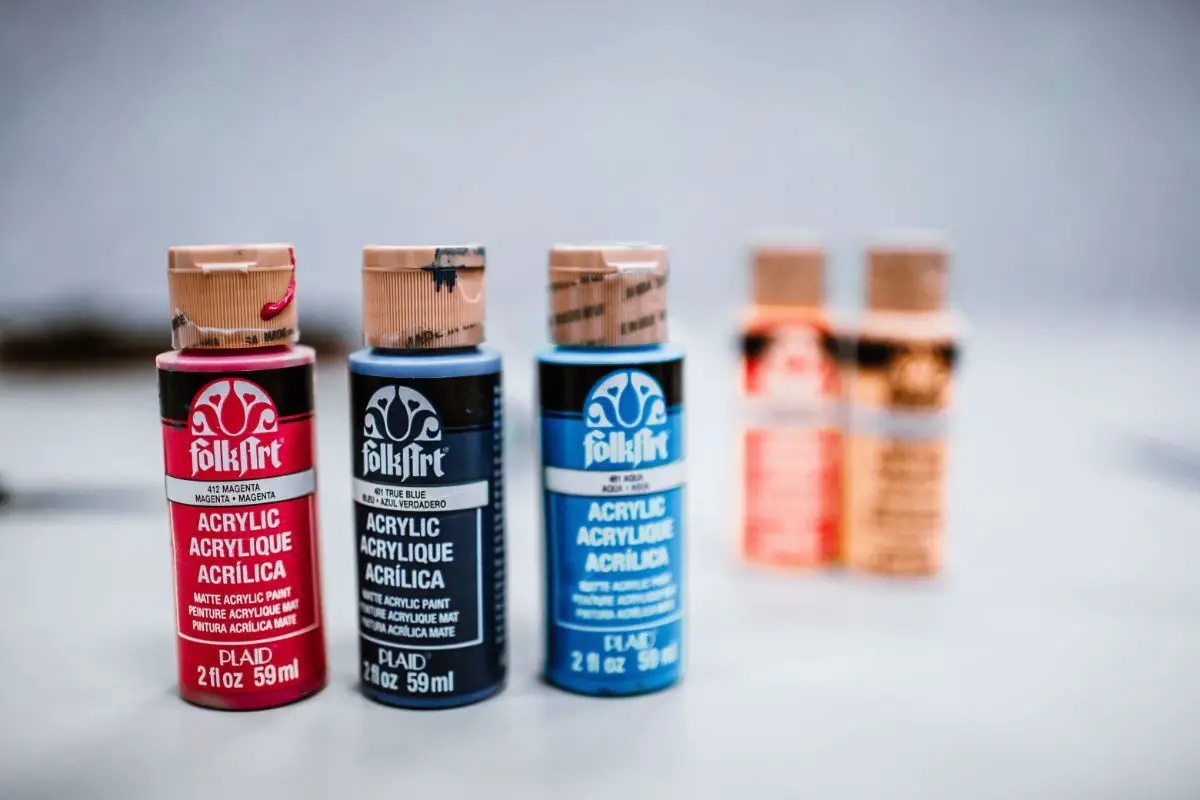
This way, you’ll be fully knowledgeable and will be able to make a more informed decision when picking out which type is going to be best for your type of project.
Their Use
First, and perhaps most importantly, is the topic of each paint’s use!
Acrylic artist paints are typically used for display purposes, and the same goes for other water-based artist paints, especially when it comes to beautiful watercolor.
However, water-based artist paints are also used by painters to scan or reproduce work, with gouache being a popular variety for this end.
However, the rise of digital art has lessened the amount that these paints are applied for those purposes.
Additionally, water-based paints such as poster paint and tempera are popular in school art classes, because they’re not permanent. That way, the class has a less messy experience!
When it comes to acrylic house paints, they’re a very popular pick for domestic exteriors.
This is because the paint is very weather resistant and breathable, able to put up with external factors like moisture and sunlight without cracking.
On the other hand, other water-based house paints will be used for domestic interiors instead, because they aren’t as good as acrylic at putting up with environmental and weather conditions.
As a result, water-based paints such as latex are popular for inside walls and ceilings.
Durability
Durability is always important when it comes to your paint, especially when it comes to certain uses.
Acrylic paints are very durable in a number of ways, and it’s largely down to their binders giving them breathability and flexibility.
As a result, acrylic paints are resistant to peeling and cracking, as well as general wear and tear. On top of that, they’re resistant to weather, which is why they’re so great for external application.
Additionally, acrylic paint is water-resistant once it has dried, and it’s even resistant to UV rays, so it won’t fade from the sun.
When it comes to acrylic artist paints, the properties are identical, meaning that you get long-lasting paint for your artwork.
As for other water-based paints, they can typically crack if you paint with them thickly, so artists should stick to thin and delicate layers.
The durability gets even worse when it comes to water-based house paints, too, because they can peel and crack easily, and are susceptible to wear and tear.
They’re also not resistant to the weather, which is why people use them on interiors rather than exteriors.
What Surfaces?
When it comes to what surfaces you can paint them onto, the two types differ.
In the case of acrylic, it’s fantastically flexible and will allow you to paint on almost all surfaces.
This is because it adheres very well, and so artists or house painters will use them on surfaces like canvas, paper, glass, metal, plastic, walls, and more.
On the other hand, other water-based paints are much more limited. If you’re using water-based artist paints, then you’ll pretty much only be able to paint on paper or cardboard.
And house paints? They’ll only work on wood and drywall. Strictly speaking, either acrylics or solvent-based and oil-based paints will allow you a far wide range of surfaces (see also “How Washable Is Acrylic Paint On Different Surfaces?“).
Types Of Binders
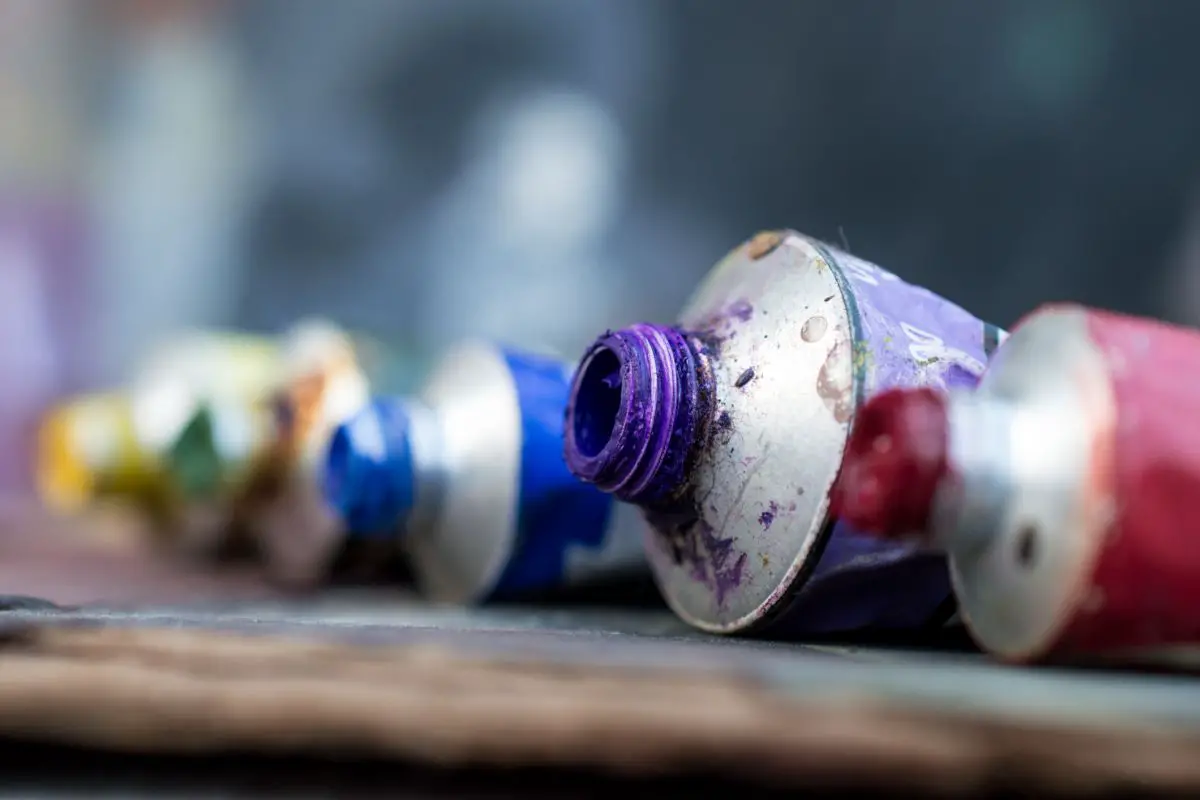
Acrylic paints will have the highest concentration of acrylic polymer resin inside them as their binder, sometimes even 100%.
When the concentration is higher, it makes the paint a lot more hardy, allowing it to resist plenty of environmental factors and put up with abrasion. However, acrylic polymer isn’t water-soluble, and it quickly dried as a water-resistant plastic.
As for other water-based paints, they naturally have a lower concentration of acrylic polymer in them, which means they aren’t as resistant to the factors we covered.
Acrylic polymer will only be part of the binder, though, because their primary binder is PVA (polyvinyl acetate).
In fact, some paints may not even have acrylic polymer inside them, instead using something like gum arabic as the binder.
Gum arabic is particularly useful because it’s water-soluble, which acrylic polymer isn’t, and so it’s great for something like watercolor.
Coverage Quality
Acrylic artist paints offer a good deal of coverage, but this isn’t the case when it comes to acrylic house paints. Adding to this, an acrylic paint that is solvent-based rather than water-based will offer even less coverage.
On the other hand, water-based artist paints can offer you great coverage, such as poster paint and gouache, though watercolor ones will give you transparent qualities if that’s what you want.
As for water-based paints for your house, you’ll be getting better coverage for every coat, especially if you’re using latex.
Finish
An acrylic artist paint will give you a satin finish, but this can be altered if you mix it with other types of acrylic, bringing more choice to your artwork.
As for acrylic house paints, then you’ll find them to give you a shiny finish, but you can get all kinds of varieties.
Whether you want semi-gloss, matte, eggshell, or more, simply check the paint tins. However, you’ll notice that acrylic house paints have streaks in them, especially if it’s a solvent-based one.
On the other hand, water-based artist paints will often have matte finishing, especially popular varieties like gouache or watercolor.
As for water-based house paints, they won’t have the shininess of an acrylic one, but at least they also won’t have as much streakiness.
Cost
When it comes to cost, acrylic paints beat other water-based paints on every front, always being more expensive.
This is true when it comes to both acrylic artist paints and acrylic house paints, though lower quality acrylic artist paints naturally cost less than the higher quality ones.
But what makes “quality”? Well, the higher prices all come down to the high consistency of acrylic polymer in them. This costs a lot, and the more of this binder there is in the paint, the more it costs.
It’s for that reason that other water-based paints are cheaper than acrylic paints, because they contain a lower consistency of acrylic polymer within them.
Availability
Tying directly into the cost is the availability of these paints. Acrylic paints are harder to get hold of than water-based paints, because they’re more expensive and contain more acrylic polymer.
This is especially true when it comes to the highest quality ones, which are very difficult to find.
On the other hand, water-based paints are going to be readily available, especially ones for houses.
Types Of Application
When it comes to their application, you’ll find that acrylic paints are a lot thicker than other water-based ones.
With that being said, you can make the acrylic paint much less thick by adding water to it, and this makes it smoother.
As for acrylic artist paints, you can also add acrylic mediums to smoothie them too, such as gel medium or matte medium.
On the other hand, water-based paints are typically smooth, for both art and house painting.
Drying Speed
It’s always useful if a paint dries quickly, and thankfully both acrylic paint and other water-based paints dry quickly. In fact, they dry a lot faster than chemical-based or oil-based paints (see also “How To Make Your Spray Paint Dry Faster“).
This is because acrylic and water-based are, well, water-based! This fact helps them to dry more quickly, because it means they’re thinner and more easily affected by airflow.
As a result, both acrylic paint and water-based paints should dry within half an hour. In fact, acrylic artist paints will even do it in about 10-20 minutes.
Can It Be Thinned?
Finally, you might want to thin the paint for certain applications or so that you can use it in a sprayer.
Thankfully, you can use water to thin both acrylic paints and water-based paints. With that being said, acrylic mediums can thin your acrylic artist paints too.
However, if your acrylic paint isn’t water-based, instead being solvent-based or oil-based, then you’re not going to be able to use water to thin it (see also “Acrylic Paint On Fabric“). Instead, you’ll have to use mineral spirits.
Final Thoughts
And there you have it! Most acrylic paints are water-based, but not all water-based paints are acrylic.
The two types have lots of differences, which make them suitable for different uses. Understand the difference with our guide!
- How To Sew Fabrics Together - June 5, 2023
- How Many Stitches Per Inch? - June 5, 2023
- How Long Does It Take To Sew A Dress? - June 5, 2023


